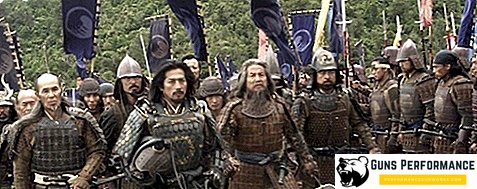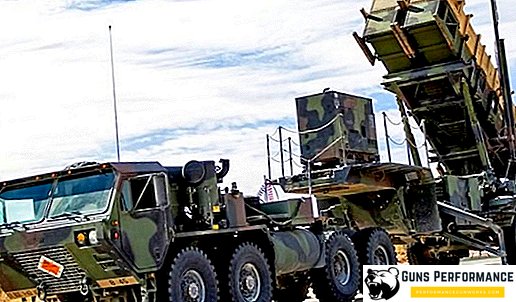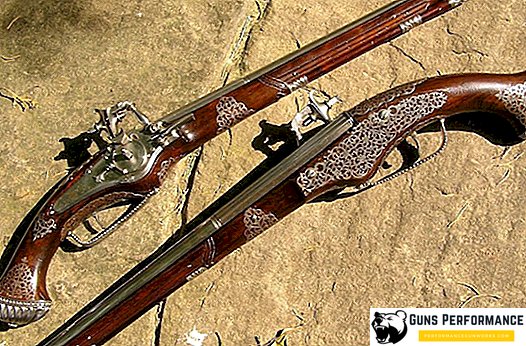We have heard many stories about samurai, the mere mention of which we associate with examples of courage and courage, with immutable rules of respect for honor and dignity. Involuntarily suggests a comparison of the samurai with the knights of medieval Europe. However, if the knight’s title meant recognition of a person of high status in society and could be transferred, both by inheritance and be given to the commoner for special merit, the Japanese samurai were a separate feudal-military caste. The entrance to the samurai caste was made from the birth of a man, and the only way out of it was his physical death.

A samurai had to follow certain laws and principles throughout his life, the violation of which was strictly punished. Wrongful acts that could harm the reputation and offend the honor of the entire clan were considered the worst offense. The culprit lost the title and title of a samurai with shame. Only the voluntary death of the culprit could wash off the shame from him and from the rest of his family. This opinion is firmly rooted in the minds of people who know little about Japan and its ethical traditions. In fact, only the most noble grandees and military leaders, who were afraid to be convicted of their misdeeds and could be exiled from the samurai clan in disgrace, went to voluntary death, suicide or in Japanese - hara-kiri. Given the fact that most of the elite caste were people from deaf provinces, few of them were willing to blindly follow age-old traditions, so if we talk about hara-kiri, then this is rather a legendary attribute attributed to samurai history. Few were willing to voluntarily and independently take their own lives.
A little story about those to whom the samurai code of honor owes its appearance
In medieval Japan, which for a long time was closed from external influence by the state, its own specific class differences emerged. Feudal lords - landowners, noble personalities of noble origin created their own separate society - a caste in which there existed their own principles, laws and orders. In the absence of a strong central authority, it was the samurai of Japan who laid the foundation for an organized system of governance in a country where each stratum of society occupied its specific place. As in the rest of the world, the military man was always on a special account. To engage in military craft meant to rank himself among the highest caste. In contrast to the simple artisans and peasants, who formed the basis of the militia in wartime, Japan had a small stratum of society, consisting of professional soldiers. Being a samurai meant being in the service.

The meaning of the word samurai literally translates as "man of service." It could be people both of the highest ranks in the hierarchy of feudal nobility, and small noblemen who were in the service of the emperor or their suzerain. The main activity of the members of the caste is military service, but in peacetime the samurai became bodyguards for high gentlemen, consisted of administrative and civil service as hired employees.
The heyday of the samurai era fell on the period of civil strife of the X-XII century, when several clans fought for central power in the country. There was a demand for professional soldiers who were trained in military craft and were respected in civil society. From this moment begins the selection of people united on a military basis in a special class. The completion of hostilities led to the fact that the new estate was considered the military elite of the state. Were invented its own rules of initiation into members of the estate, defined moral and ethical criteria for caste membership, outlined a range of rights and political freedoms. A small number of samurai, permanent service and high positions provided them with a high standard of living. They said about samurai then that these are people who live only during the war and their meaning of life is only to gain fame on the battlefield.

Samurai differed and their military equipment, a samurai mask along with his helmet were a mandatory attribute of military equipment. In addition to virtuoso swordsmanship, the samurai should have excellent possession of a spear and poles. Professional warriors mastered hand-to-hand fighting techniques perfectly, they knew military tactics perfectly. Were trained in riding and archery.
In fact, this was not always the case. In times of peace, most of the samurai were forced to find means of subsistence. Representatives of the nobility went into politics, tried to occupy important military and administrative posts. The poor nobles, returning to the province, made ends meet, becoming artisans and fishermen. It was a great success to be employed by some gentleman to serve as a guard or to occupy a minor administrative post. Samurai education and their level of training allowed them to successfully engage in such activities. Due to the fact that the Japanese nobility of the highest level was represented by people from the samurai clan, the spirit of the samurai penetrated into all spheres of civil society. Being numbered among the samurai clan becomes fashionable. In class titles it becomes obligatory to belong to the highest military-feudal caste.
However, the warrior caste was not a purely male club. Leading their ancestry from ancient times, many noble births in Japan had women in the elite class. Samurai women were secular and freed from military and administrative duties. If desired, any of the women of the clan could get a certain position, engage in administrative work.
In terms of morality, samurai could have long-lasting relationships with women. Samurai was not inclined to start a family, so marriages, especially in the era of feudal wars and civil strife, were not popular. Argued that among the elite class are often practiced homosexual relationships. Frequent military campaigns and a permanent change of residence only contributed to this. About samurai, it is customary to speak only in superlatives; therefore, such facts are silent in history and are not publicized in Japanese society.
How to become samurai
The main aspect that was emphasized during the formation of the new class was the upbringing of the younger generation. For these purposes, a purposeful program of education and training was created, which included a variety of disciplines. The path of the samurai began in childhood. A child in a noble family, by birth received a high title. The basis for the education of the future warrior was the ethical code of Bushido, which became widespread in the XI-XIV centuries.
From a very early age, the child was given two wooden swords, thus instilling respect for the symbols of the warrior caste to the boy. Throughout the entire period of growing up, the emphasis was placed on the military profession, so the samurai children from childhood were trained in the ability to wield swords, handle a spear and shoot straight with a bow. Riding and hand-to-hand fighting techniques were necessarily included in the program of military craft training. Already in their teens, young men were trained in military tactics, and they developed the ability to command troops on the battlefield. In each house of the samurai there were specially equipped rooms for conducting scientific studies and training.

At the same time, the future samurai developed the necessary qualities for the future warrior. Fearlessness, disregard for death, composure and complete control over one's own emotions should have become permanent traits of the young samurai's character. In addition to training sessions, the child developed perseverance, endurance and endurance. The future warrior was forced to do heavy housework. Training hunger, cold hardening and limited sleep contributed to the development of child resistance to hardship and deprivation. However, not only physical training and training in military craft were the main aspects of cultivating a new member of the elite class. A lot of time was devoted to the psychological education of the young man. The Bushido Code largely reflected the ideas of Confucianism, therefore, in parallel with physical exercises, from an early age, the main provisions of this doctrine were instilled in children, which included:
- implicit obedience to the will of the parents;
- honoring parents and their teacher;
- loyalty to the person representing the highest power in the country (shogun, emperor, overlord);
- the authority of parents, teacher and master is indisputable.
At the same time, the samurai tried to instill in their children a craving for scientific knowledge, for literature and for art. In addition to military craft, the future warrior was well aware of the details of social life and the system of government. For samurai created its own training program. Ordinary schools samurai ignored, considering training in them incompatible with their position in the public hierarchy. They always said about samurai: “He can kill an enemy without hesitation, he can fight a dozen enemies alone, walk tens of kilometers through mountains and forests, but there will always be a book or drawing sticks next to him”.

The age of majority in the samurai came with 15 years. It was believed that at this age, a young man is ready to become a full member of the elite class. The young man was given real swords - katana and wakizashi, which are the real symbols of belonging to the military caste. Swords became constant companions of the samurai throughout life. Female samurai received a Kaiken, a short knife in the shape of a dagger, as a sign of taking the title. Together with the presentation of military weapons, the new member of the warrior caste necessarily received a new hairstyle, which was a distinctive feature of the image of the samurai. The image of a warrior was completed by a high hat, which is considered an obligatory attribute of a men's suit.
The rite of initiation into samurai was conducted both among the nobility and in the families of poor nobles. The difference was only in the characters. Poor families sometimes did not have enough money for expensive swords and chic costumes. A new member of the military caste should have its patron and guardian. As a rule - it could be a wealthy feudal lord or a person in the public service, opening the way for a samurai to adulthood.
Samurai Outfit
Japanese culture has always been distinctive and colorful. Features of the Japanese mentality left an imprint on the lifestyle of different classes. Samurais have always tried to use any methods and means in order to stand out with their appearance among those around them. Helmet and armor were added to swords, which samurai wore all the time, in combat conditions. If the armor did indeed play a protective role in defense, protecting the warrior from enemy arrows and spears, then the samurai helmet is a separate story.

For all nations and peoples, a warrior’s helmet was a must-have element of military gear. The main purpose of this headgear is to protect the head of a warrior. However, in Japan, the samurai helmet performs not only a protective function. This item is more like a work of art. Kabuto, which was used as military equipment in the V century, has always been distinguished by its originality. No helmet is like the other. They were made by craftsmen specially made to order for each samurai. The master paid more attention not so much to the protective functions of the headgear, but to his appearance. On military headdresses one could see various decorations. As a rule, for this purpose horns were used, which could be real or made of metal. The shape and position of the horns always changed in accordance with the fashion that clearly followed political sentiments in Japanese society.
It was customary to wear the emblem or the coat of arms of the lord on the helmets. On the back, special ribbons and tails were usually attached, which served as a distinctive mark for soldiers of the same clan during combat clashes. The samurai helmet looked more like a psychological weapon. About samurai, who wore their helmets during the battle, said that in such a dress samurai were similar to demons. Losing a helmet in battle means losing your head.

It was believed that such a helmet serves more to decorate a warrior in battle. However, do not underestimate the combat value of this element of a military suit. Made of thin sheet steel, the helmets perfectly protected the head and, above all, the samurai’s neck from the blows of the enemy. In battle, the samurai was important to protect his head. Wounds to the neck and head were considered to be the most dangerous for a samurai, therefore, the strength of the structure itself should be added to the decorative elements that decorated the helmet. The only disadvantage of Japanese helmets was the absence of the visor. The open face of a warrior in battle has always been considered the most vulnerable spot, but the Japanese would not have been Japanese if they had not thought up something else capable of covering their faces from enemy spears and arrows. In addition to the kabuto, each samurai had a protective mask. Happuri or hoate were used with helmets. The samurai mask could cover the face completely, or cover only the lower part of the face. Each mask was unique in its appearance. A warrior dressed in armor, with a helmet on his head and a mask on his face, was fairly well protected in battle. The appearance of a samurai in full battle dress aroused the enemy with awe and fear. Skillful possession of horse riding only increased the psychological effect.
Evaluating the samurai equipment, it can be argued that to a greater degree the technical equipment of the soldiers was of a presentational nature. In battle, it was important to emphasize the warrior’s belonging to the highest caste. The pretentiousness of the elements of the costume, the bright colors of the samurai's robes, the shape of the helmet and the mask indicated the high position of the warrior. As in medieval Europe, where the knightly armor was an indispensable attribute of military prowess, so in Japan the armor and samurai costume personified courage and military prowess.












